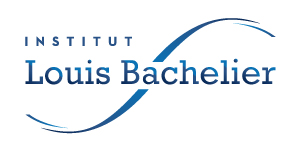This paper explores the potential contribution of Sustainability-linked Money Creation (SMC) to sustainable economic policies. Our simulations suggest that, in comparison to a baseline scenario, SMC issues could potentially constitute an anti-inflationary, counter-cyclical green transition policy, that increases biomimetic resilience and contains income and wealth inequalities. We finally discuss the policy implications, as well...
This paper explores the contribution of ecosystemic macroprudential regulations to the sustainable development goals in an ecological PK-SFC framework. The results highlight the importance of a paradigm shift in prudential regulation in the fight against climate change.
We analyze the impact of agricultural productivity growth on tropical deforestation. Our dynamic model of forest-to-farmland, addressing the Jevons’ paradox and Borlaug hypothesis, predicts that rising agricultural productivity, reflected by declining fertilizer price growth, has an ambiguous effect on deforestation. Using tropical forest loss data (2000-2022) and fertilizer price variations, we find a negative...
The economic agent was previously assumed to be distinct from its environment and that nothing was forcing him to act on it. With the ecological crisis, every agent appears to be inserted into an environment, which he modifies in an irreversible way without even having decided to do so. This changes in depth the...
In September 2020, the city of Bogotá introduced a major market-based reform to its odd-even driving restriction. The big winners of the reform are middle-income individuals who now use their cars more often, whereas the big losers are high-income individuals who now spend more time in traffic.
Our analysis of the Climate Risks and Opportunities Index (CRORI) and the CDP climate score reveal a parallel improvement of these indices with different sectoral disparities over the 2015–2019 period. While our results are encouraging, they need to be put into perspective because these firms are still far from being carbon neutral.
Our findings suggest a new dimension of the natural resource curse: the fragmentation of identities, between ethnic groups and nations.
We examine in this paper sustainability-linked bonds (SLBs) whose issuance now totals more than USD 200 bn. There is a structural design flaw in the SLB mechanism: setting a significant coupon step-up does not suit the issuer’s nor the investors’ interests, considering conditionality. This creates a no win situation for the issuer and investors alike and explains the “benign”...
The paper examines the relevant cost benefit framework for state agencies investigating the potential of local projects to mitigate climate change. We propose a new metric that incorporates into the analytical framework the dynamic interactions between the project and its continuation.
We address the long-standing challenge of adding optimal exploration to the classic Hotelling model of a non-renewable resource. We prove that a frontier of critical levels of proven reserves exists, above which exploration ceases, and below which it proceeds at infinite speed.
Découvrez en ligne la dernière newsletter et inscrivez vous pour recevoir la prochaine


